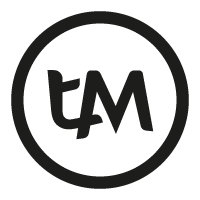Have you been on a site where the content is confusing? They use jargon, long paragraphs and you cannot follow what they are saying. Why can’t it be in plain language?! You’re so frustrated you just want to leave the site and find information elsewhere.
But what if that site is yours?
And this confusion is what your visitors are experiencing?
This article outlines some quick and easy ways to fix this using plain language. I also include links to resources where you can learn more.
Topics covered
This page is updated constantly, so be sure to check back or bookmark this page.
How to improve your content
Plain language is the art of writing in clear and concise language. On the web, people scan– not read– information. They want information fast. In order for you to engage readers, you must make it easy for them.
1. Use clear and concise language when possible
Replace difficult words, multisyllabic words, with words that are easy to understand.
Example:
We operate two outreach programs. (Bad)
We run two outreach programs. (Good)
2. Use an active voice (I/we/you)
Example:
Women are supported by us. (Passive - Bad)
We support women. (Active - Good)
3. Break up your content
- Use headings and subheadings to break content up and make it easy to scan
- Break long paragraphs into shorter ones
- Use bullet or number lists where it makes sense
4. Avoid unnecessary details
Keep your writing simple. Don’t add details that don’t matter and might make things confusing. Stick to what’s important.
Example:
The research study, which was conducted over a period of two years from January 2020 to December 2022, involved a total of 500 participants who were recruited from various geographical locations across Canada. (Bad)
The research study, conducted over two years, involved 500 participants recruited from across Canada. (Good)
5. Hyperlink the descriptive text, not “click here”
Example:
Click here to download (Bad, not good for SEO, and what are we downloading?)
Download the Children’s program (Good)
Resources
This is a selection of tools and resources to help you with plain language writing.
1. Style guides to better understand plain language
- Canada’s Style Guide: This is a set of rules that the Government of Canada uses to create web content that can be easily found, understood and used.
- US Government’s Plain Language site: This site provides rules to make it easier for the public to read, understand, and use government communications.
- Plain Language Web Writing Tips: Use this checklist when writing in plain language.
2. Tools to help you improve readability
- OneLook.com: Think of it like a thesaurus, but for finding simpler words. It lists the easiest words first and then harder ones as you scroll down.
- Hemingway Editor: This app highlights parts of your writing that could be clearer, making your writing easier to understand.
- Yoast SEO: If you’re using WordPress, this plugin can check if your writing is easy to read and has other helpful features too.
3. AI prompts to make content easy to read
ChatGPT can be useful not only in helping you find the right tone of voice, but also make your writing easier to read. Here are some prompts you can use. Don’t forget to proofread to make sure it makes sense to you.
Rewrite this using simple and concise language that a 6th grader can understand: [your content]Rewrite this in a way that's easy for anyone to understand: [your content]Explain the concept of [topic] in simple terms.Summary
Plain language is the art of writing clearly and concisely, especially important on the web where people scan for information quickly.
By keeping things clear and simple, plain language helps more people understand information easily, making their experience better. When they understand you, it makes you more credible!
Building a website that brings you business means not only having content, but making it easy for your visitors to understand it and take action. If you need a web designer to help you create content in plain language, reach out to me.
Ready to start?
Bring out the excitement. Let’s discuss your vision!

